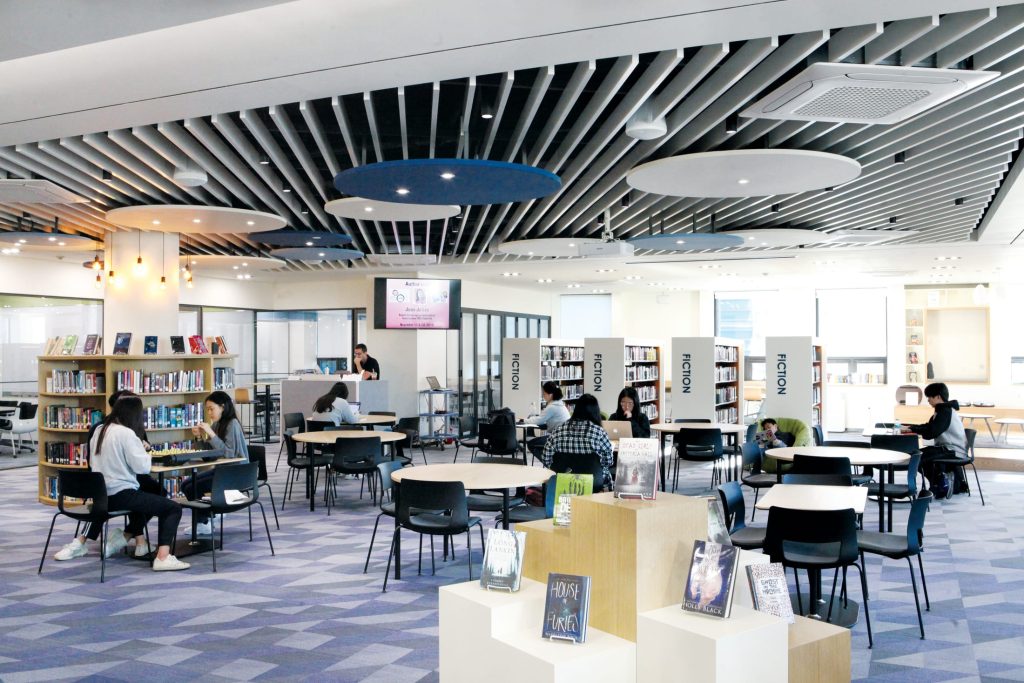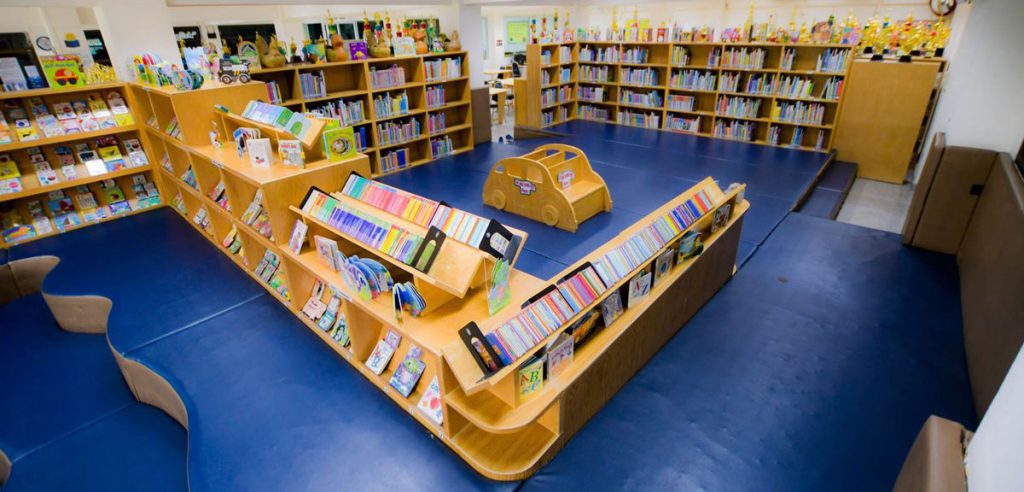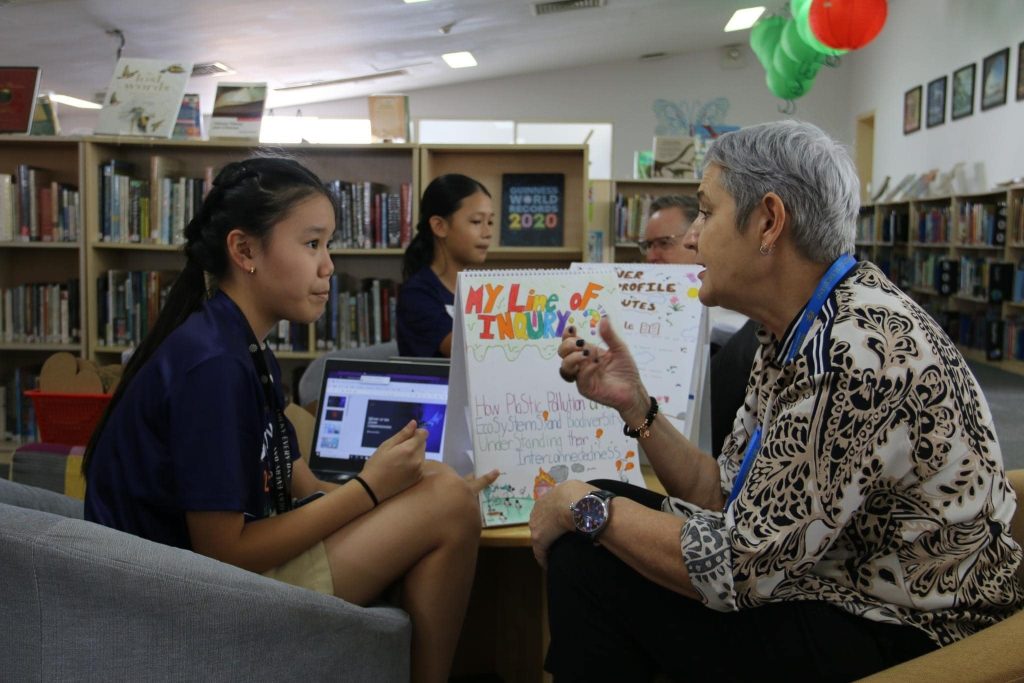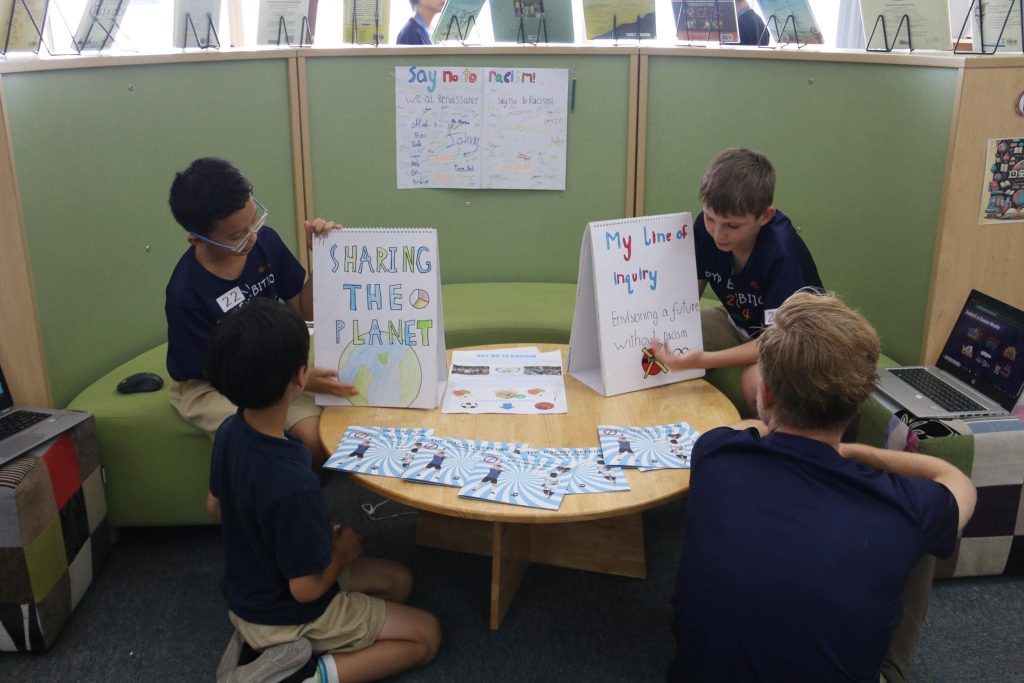In the age of digital learning, libraries remain a cornerstone of education. But in international schools, they are so much more than shelves of books and quiet corners. They serve as dynamic learning environments that foster curiosity, support academic excellence, and reflect cultural diversity. Whether it’s for a curious first grader or a dedicated IB student, the library in an international school offers more than meets the eye.
What makes an international school library unique?
An international school’s library is not a universally applicable space. It is a multi-functional learning zone designed to support students from different countries, cultures, and learning styles. These libraries cater to a wide age range, from the playful needs of early readers to the complex research demands of pre-university students.
What defines a Primary School library experience?
At the primary level, libraries focus on instilling a love for books and discovery. They are colourful, inviting, and filled with materials tailored for young minds. The experience is tactile and emotional, helping children associate books with fun and comfort. Storytime sessions, educational comics, and interactive reading areas create an atmosphere that encourages frequent visits and builds early literacy skills.
Why does a Secondary School library need more than just books?
Secondary students need a space that blends academic rigour with flexibility. A modern library for this age group includes quiet zones for personal study, tech hubs for research, and group spaces for collaboration. It becomes a second classroom, a research centre, and a meeting point, all at the same time. As coursework becomes more challenging, the library acts as a support system, offering access to materials, mentorship, and academic resources.

A modern library for this age group includes quiet zones for personal study
How does the IB Diploma Zone support advanced learners?
IB students operate at a different academic level, and their library needs reflect that. The IB Diploma Zone, at Renaissance International School called the Hive, is a specialised section of the library offering resources for independent inquiry, extended essays, and in-depth subject research. Students preparing for university-level education rely on this space to hone their critical thinking and information literacy skills. Equipped with advanced tools and resources, the IB Zone bridges the gap between school and higher education.
Explore: Renaissance International School Saigon’s library
What does a modern school library look like?
Gone are the days of dusty shelves and rigid silence. Today’s library is interactive, flexible, and student-centred. Each section serves a unique purpose and supports a specific age group with tailored features and resources.
Primary School Library
Designed to spark curiosity and nurture a love for reading, the primary school library is a vibrant, welcoming space tailored to young learners. Every corner is thoughtfully arranged to make reading fun, engaging, and part of a joyful learning journey.
- Interactive Reading Corner: A colourful, comfy space filled with beanbags, rugs, and book displays. It encourages young readers to lose themselves in stories in a playful, stress-free setting.
- Educational Comics and Picture Books: Engaging visuals and age-appropriate language make reading feel like playtime. These books improve vocabulary and comprehension while keeping kids entertained.
Secondary School Library
As students grow, so do their academic needs. The secondary school library offers a more structured environment where learners can focus, collaborate, and explore more profound knowledge through both traditional and digital resources.
- Quiet Study Space: A calm and focused area that allows students to concentrate on homework, revision, or reading. It promotes discipline and academic independence.
- High-End Computers: Loaded with productivity tools, research software, and secure internet access, these computers enable students to conduct academic research and complete digital assignments efficiently.
- Group Discussion Room: Whether for debates, project planning, or presentations, this space fosters communication skills and team collaboration. It’s ideal for developing 21st-century soft skills.

About the international school library
IB Diploma Zone
Tailored for high-level academic exploration, the IB Diploma Zone provides dedicated resources and spaces that support independent research, critical thinking, and the demanding requirements of the IB curriculum.
- Advanced Research Materials—Students can access university-level content such as peer-reviewed journals, case studies, and subject-specific literature—tools necessary for deep academic exploration.
- University-Grade Databases— These provide scholarly sources required for extended essays and major projects, ensuring students are well-prepared for higher education standards.
- Individual & Group Study Areas— With flexible seating and layout options, this zone supports both focused individual study and collaborative discussions, aligning with the self-directed learning of the IB program.
Top 5 Benefits of the Library in International Schools
A well-designed school library is more than just a reading space—it is a dynamic learning hub that fosters academic success, creativity, and personal growth. Research shows that students with access to quality furniture in school libraries and diverse resources perform better in their studies and develop essential lifelong skills. According to the American Library Association, 90% of educators agree that school libraries play a crucial role in student achievement.
Below are the top 5 benefits of libraries in schools and how improving the school library can encourage students to read more.
1. Develops reading and research skills.
A well-structured primary school library plays a vital role in fostering literacy and independent learning.
- Improves Literacy & Comprehension—Regular reading enhances vocabulary, critical thinking, and writing skills. Studies show that students who read for pleasure score higher on standardised tests.
- Encourages Independent Learning—Libraries teach students how to find, evaluate, and use information effectively, crucial skills for academic success and real-world problem-solving.
- Enhances Learning Spaces— A thoughtfully designed library interior in primary school with engaging school library bookshelves and comfortable primary school library furniture makes reading an enjoyable experience.
2. Enhances Academic Performance
A well-equipped secondary school library provides the necessary resources to help students excel in their studies.
Supports Curriculum Learning—Offers textbooks, reference materials, and academic databases like JSTOR and ProQuest to help students deepen their knowledge.
Improves Research Skills—Teaches students how to conduct thorough and credible research using citation tools and academic search engines.
Encourages a Productive Environment—School library furniture and designated study areas enhance concentration and productivity, making it easier for students to complete assignments.
By integrating modern school library furniture, advanced learning tools, and structured study programs, the library fosters academic excellence and independent learning.

Primary school library staff assist students in developing research skills, citation management, and information literacy
According to a study by the Library Research Service, schools with well-supported libraries see a 10–20% increase in student reading and writing scores. This finding highlights the direct benefit of the library in school on student success.
3. Fosters creativity and innovation.
A modern school mixed-use library is more than just books—it’s a hub for creativity and experimentation.
- Encourages Exploration—Provides access to graphic novels, creative writing materials, and multimedia content that inspire students to think outside the box.
- Supports Hands-On Learning – Cutting-edge school library equipment such as 3D printers, podcasting kits, and digital labs allows students to experiment and innovate.
- Boosts Engagement – Schools that integrate library programs into creative projects report a 30% increase in student engagement and problem-solving skills.
By fostering curiosity and encouraging students to develop their creative potential, libraries help shape the innovators and leaders of tomorrow.
4. Promotes Global Awareness
A school mix library provides access to diverse cultures, global issues, and different perspectives.
- Encourages Cultural Understanding – Offers multilingual books, world history texts, and international news sources to broaden students’ perspectives.
- Exposes Students to Global Challenges – Provides access to UNESCO reports, climate change studies, and diverse literature, helping students understand pressing world issues.
- Develop a Global Mindset – Engaging with international authors, global research, and cross-cultural studies prepares students for an interconnected world.

A dynamic primary school library learning space, designed for interactive reading and collaborative exploration
5. Supports Mental Wellness
Beyond academics, school libraries play a crucial role in student well-being.
- Provides a Quiet Refuge – A peaceful space for students to relax, focus, and escape the stress of school life.
- Reduces Stress & Anxiety – Reading has been shown to reduce stress by up to 68%, making it an effective tool for relaxation.
- Offers Mental Health Resources – Many school libraries include self-help books, counselling materials, and wellness programs to support emotional well-being.
Library Rules at International Schools
General Rules
- Maintain a Quiet Study Environment – The library is a shared space for reading, studying, and research. Please keep noise levels low to avoid disturbing others.
- Respect Library Property – Handle books, digital devices, and school library furniture with care to ensure they remain in good condition.
- No Food or Drinks – To preserve the library interior and protect books and equipment, food and drinks are not allowed inside the library.

These guidelines ensure that the school’s mixed-use library remains a welcoming and resourceful space for all students
Borrowing and Returning Books
- Loan Limit & Duration – Students can borrow up to 5 books at a time for 2 weeks.
- Renewals & Reservations: If there are no pending reservations, you can renew books through the library app.
- Late Returns & Penalties – To ensure fair access, overdue books may incur borrowing restrictions until returned.
- Lost or Damaged Books – Students are responsible for replacing or compensating for any lost or damaged library materials.
Using Library Equipment
- Register for Specialised Equipment – Students must book in advance to use facilities like the 3D printer, scanner, or podcasting kit.
- Presentation & Collaboration Spaces – The group discussion room and presentation areas require prior reservation to ensure availability.
- Responsible Use – Library technology, including computers and printers, must be used for academic purposes only. Misuse may result in restrictions on future access.
FAQs About the International School Library
What is the importance of libraries in international schools?
Libraries are more than just storage for books—they’re knowledge centres. In international schools, they serve as bridges between cultures, languages, and academic needs. A well-equipped library nurtures independent thinking, supports multiple curriculums, and encourages a global mindset. Students grow not only as readers but also as researchers, collaborators, and lifelong learners.
What resources are essential for an international school library?
A modern library should include:
- Age-appropriate books in multiple languages
- Multimedia materials
- Access to global academic databases
- Research tools
- Reading programs and literacy activities
- Comfortable reading areas for younger children
- There are study zones and computer stations available for older students.
These resources ensure every learner has the tools they need, no matter their background or educational stage.

A modern library
How does a library support language learning and diversity?
International school libraries play a critical role in language acquisition and cultural inclusion. With multilingual books and international content, they help students maintain their mother tongues while improving their English or additional languages. They also expose students to stories and knowledge from across the globe, promoting empathy and open-mindedness.
What equipment do modern international libraries use?
Contemporary libraries blend physical and digital tools. Essential equipment includes:
- Smartboards for interactive lessons and presentations
- E-readers and tablets for digital reading
- Computers with internet and educational software
- Scanners, printers, and projectors
- Audiovisual equipment for language practice
This tech integration ensures that the library remains a cutting-edge academic support centre.
Modern international school libraries are vibrant, essential parts of the learning ecosystem. Every inch, from the playful primary corners to the high-tech IB Zone, is designed with a purpose. More than just a room of books, the library is a launchpad for ideas, exploration, and growth—guiding students at every step of their educational journey.

